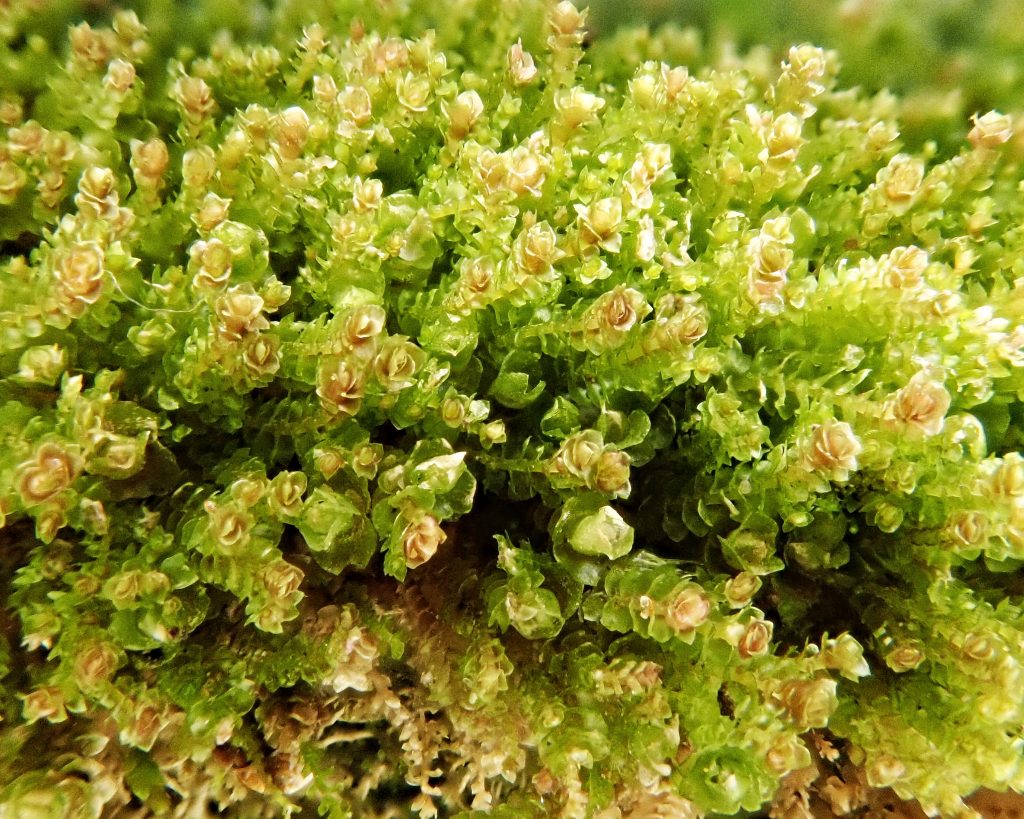
Well, I found yet another way to botch an identification! The ironic part is that I actually thought this was a Marsupella sp. from looking through the illustrations in Schofield’s “Field Guide to Liverwort Genera of Pacific North America”, before I started the technical identification process.
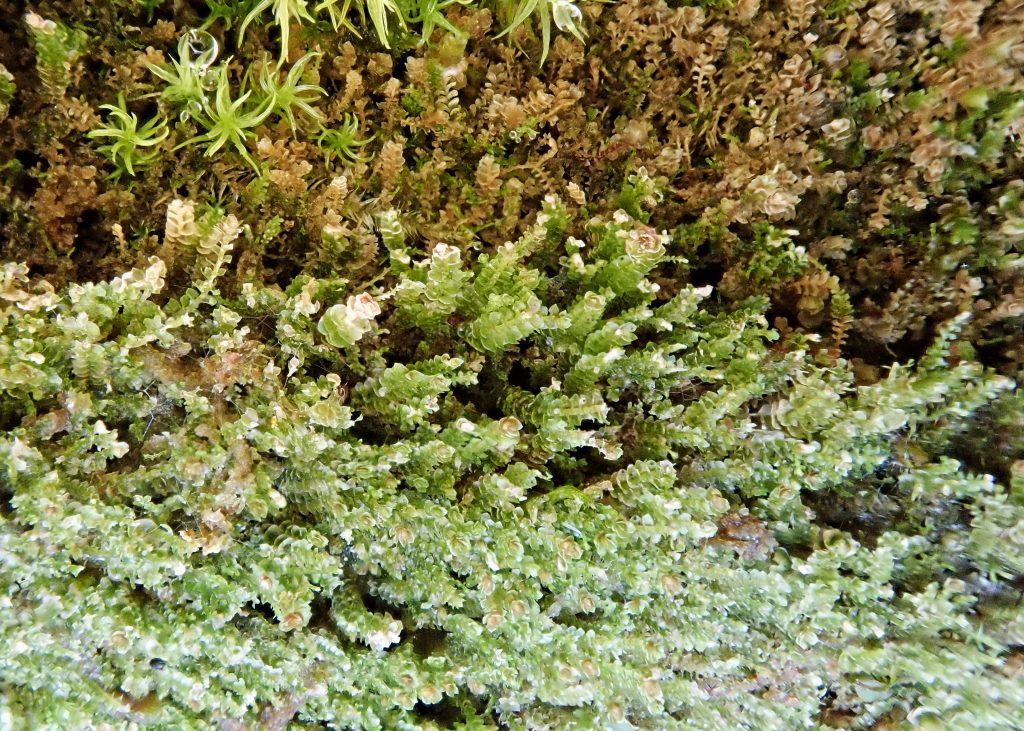
I also thought it was tiny, rather than just really small, so I didn’t question the result when I measured it using the reticle of my microscope. The thing about measuring with the reticle is that it has to be calibrated for different magnifications. And I have a little chart that says how many microns each division represents at each magnification. But the problem was that I used the 100x multiplier, when I was at 40x! Which resulted in me believing that the width of the shoot was under .5mm, rather than 1mm, and shunted me off to the wrong side of the key.
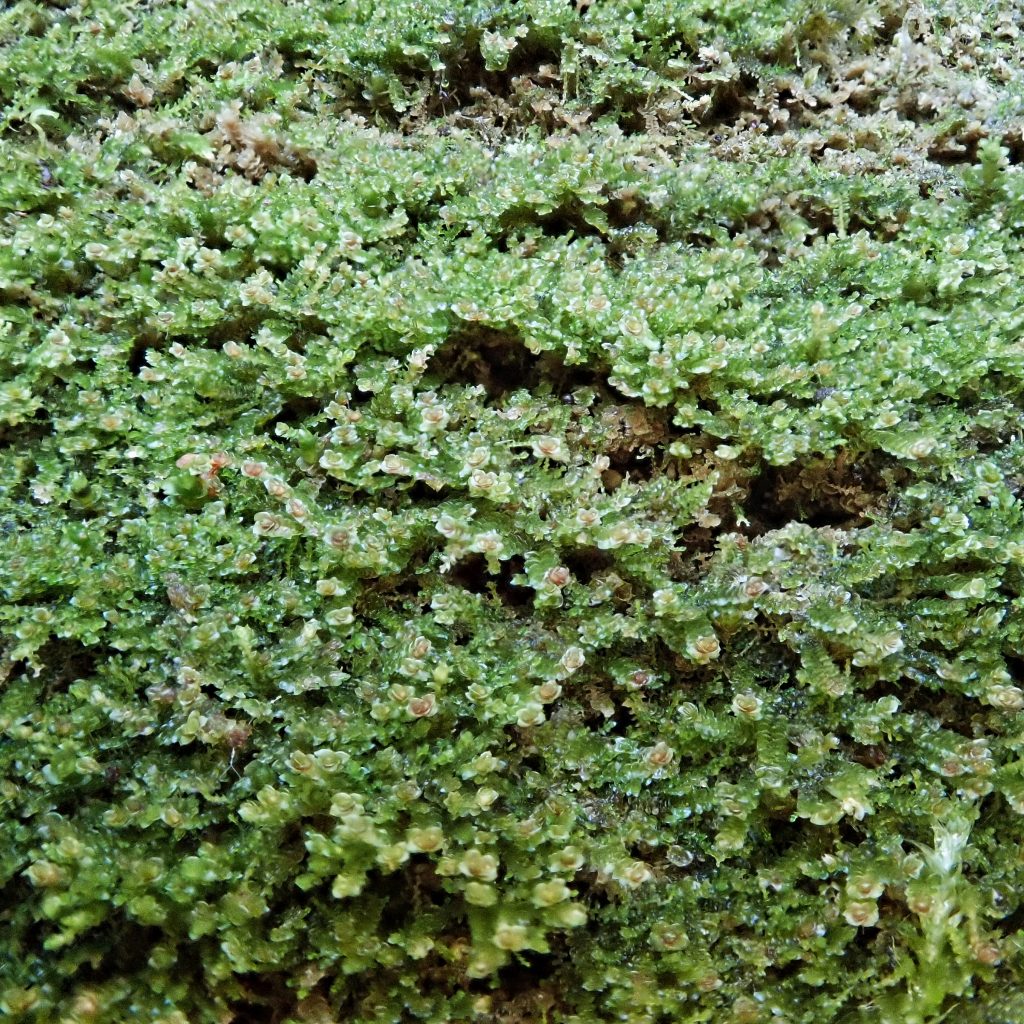
But, as usual, David Wagner set me straight when I asked him to vet my presumptive Lophozia. I was pretty bummed, having spent over 2 hours hunched over the microscope trying to parse these distinctions. And when I explained to David how I had arrived at my conclusion, he realized I had mis-measured it. Rather embarrassing, that!
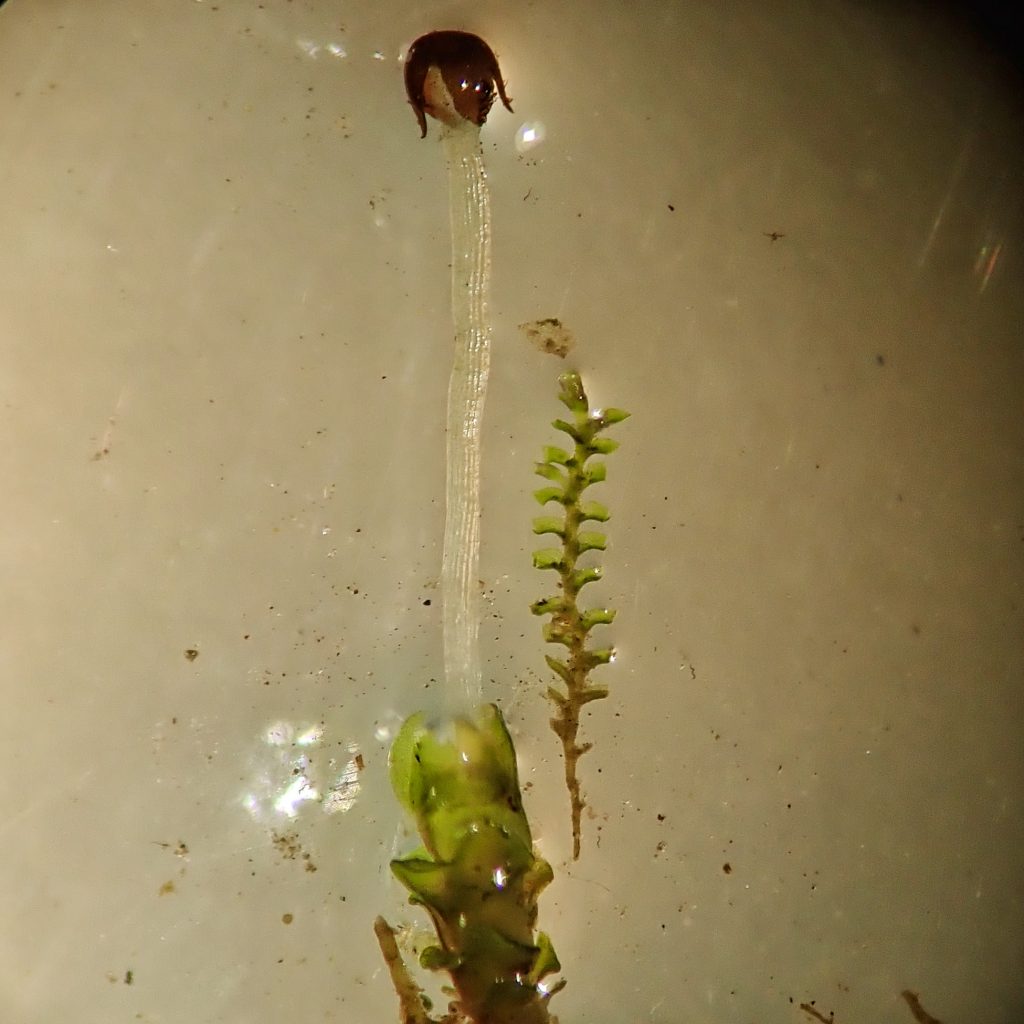
Really a neat little liverwort, though. It was so small that I couldn’t see much detail with my naked eye, but it was lovely under the microscope, quite geometric with the lobed leaves jutting out perpendicular to the stem. And I remembered to keep it fresh in the refrigerator, so I was able to see the oil bodies and the chloroplasts in the cells at 400x magnification.
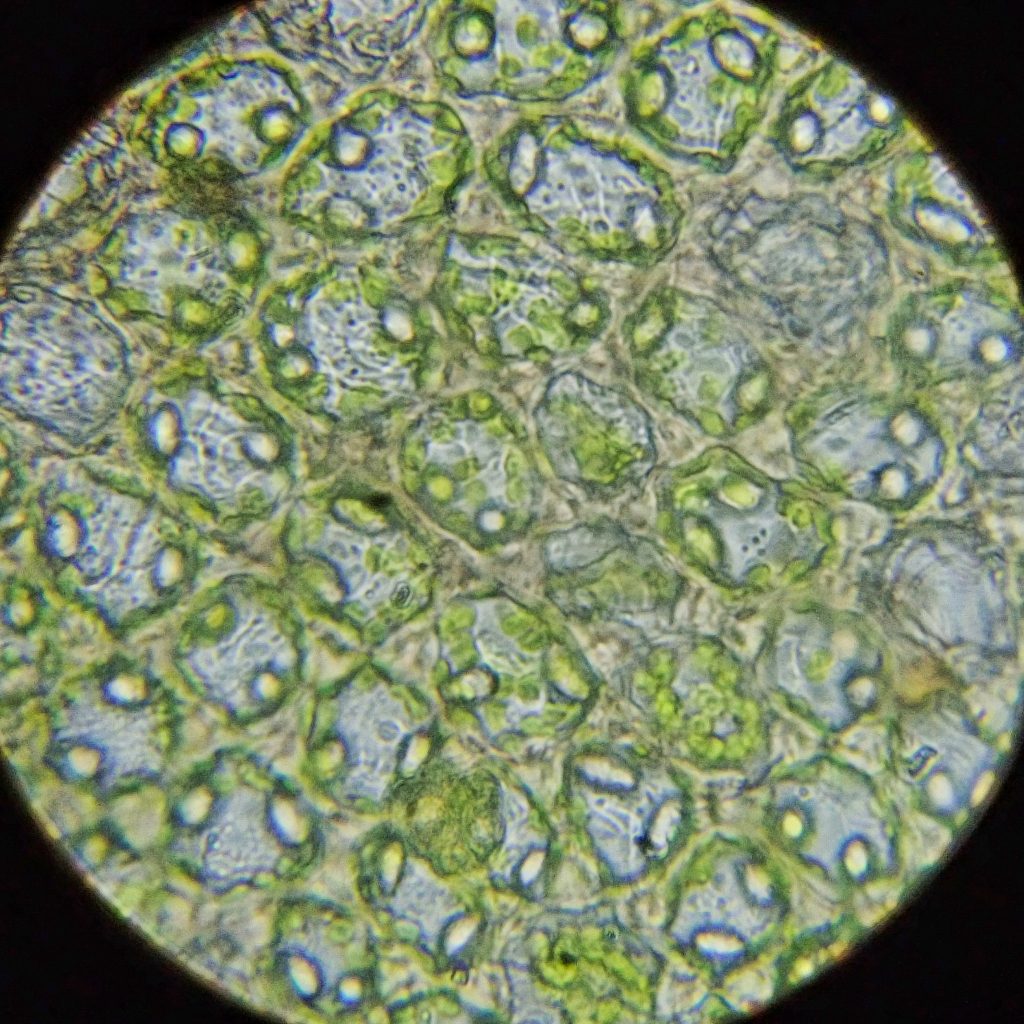
In fact the whole leaf structure was beautiful at that magnification, like a pastel stained glass window. This sight really brings it home to this denizen of the macroscopic world that the actual processes that enable life as we know it, that let me move about and find and marvel at these intricacies, are all happening on a microscopic level.
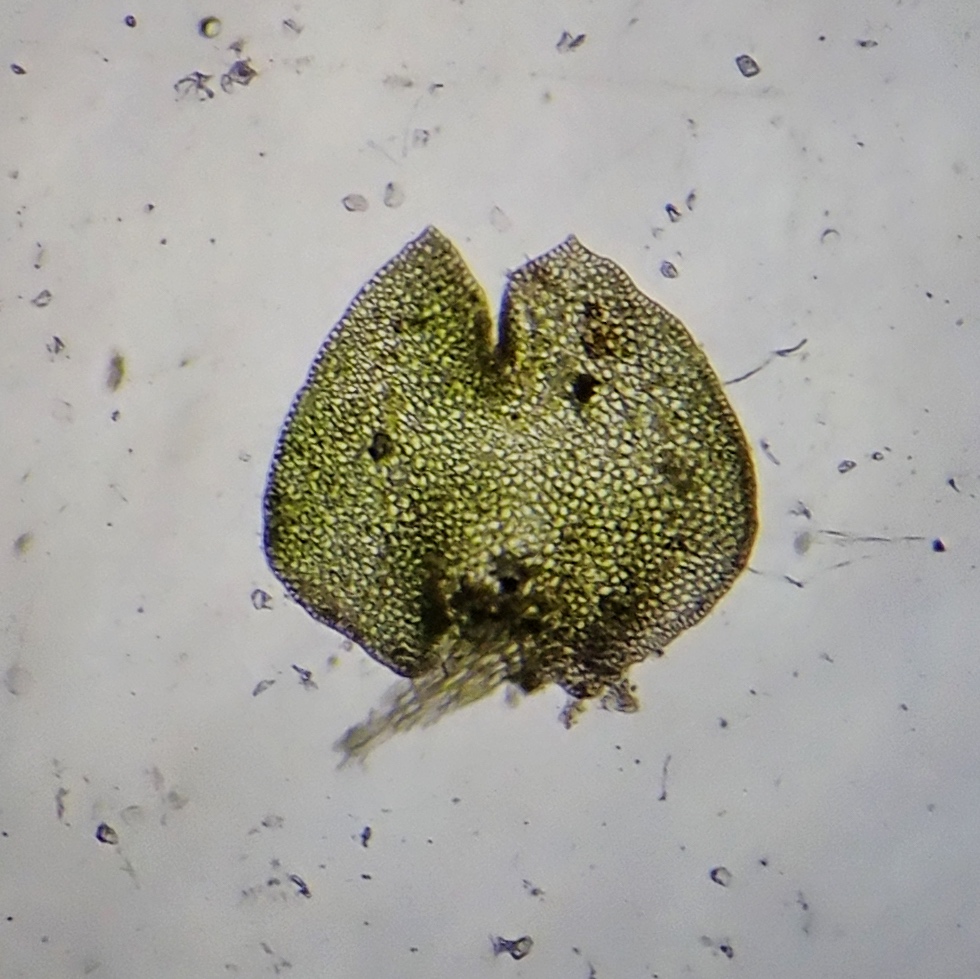
Description– Small (shoots 1cm tall by 1mm wide), olive to dark green (some populations may be almost black); leaves are bilobed, with somewhat pointed tips and revolute margins; leaves are transversely inserted and spread widely; grows in turfs of narrowly spaced shoots, but doesn’t usually form dense mats; Probably not possible to identify to species in the field unless you are an experienced bryologist with a handlens, and even getting it to genus will require magnification and a key- There is a good one here.
Similar species– Too many to list, and few of them distinguishable to genus without serious magnification.
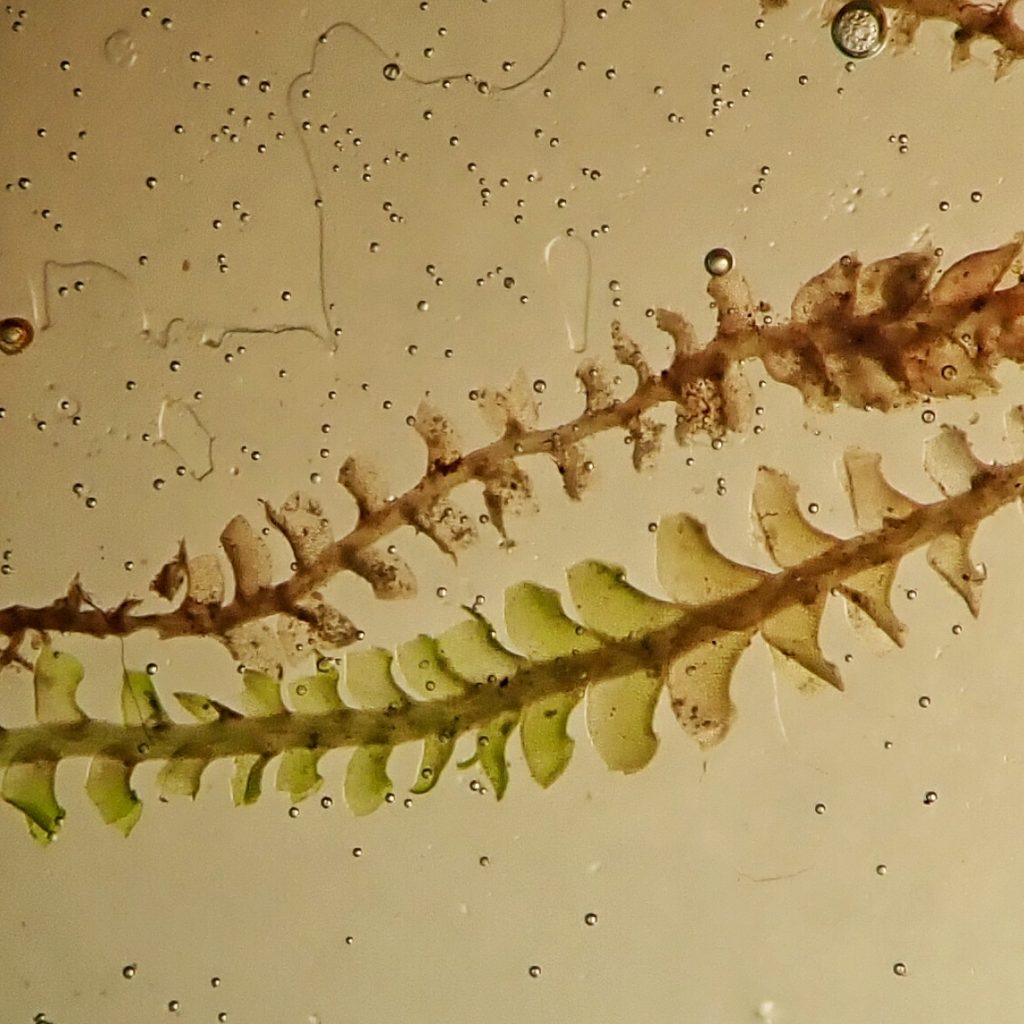
Habitat– Rock and packed mineral soil in shady, seepy areas; often found in road cuts and riparian canyons.
Range-Circumboreal; most common west of the Cascades in our region
Reproductive timing– Late winter to early summer
Etymology of names–Marsupella is from the Greek for ‘little pouch/purse’ and refers to the enclosure which protects the developing sporophyte in members of this genus. The specific epithet emarginata is from the Latin for ‘without a margin’, and is a botanical term which refers to the notch at the leaf apex which separates the lobes.

https://websites.rbge.org.uk/bbs/activities/liverworts/Marsupella%20emarginata.pdf
https://cisfbr.org.uk/Bryo/Cornish_Bryophytes_Marsupella_emarginata_var_emarginata.html
http://southwalesbryos.blogspot.com/2015/03/marsupella-emarginata.html?m=1
Key to Genera of Oregon Liverworts
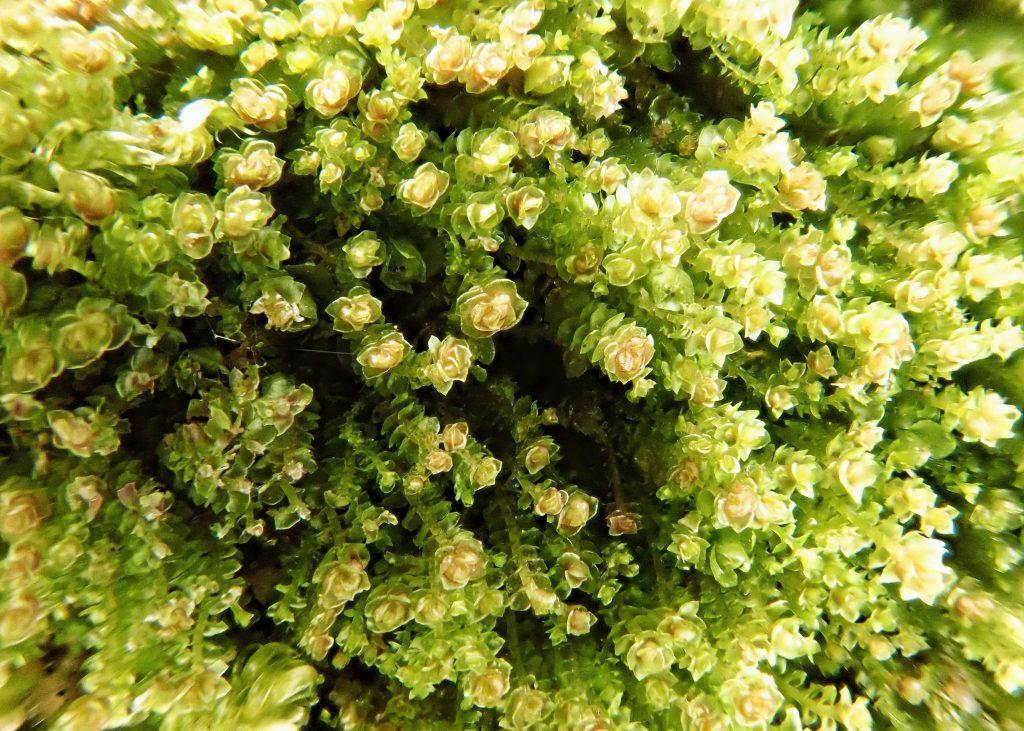
When people ask me who my favorite artist is I always say “Nature.” They usually laugh and then ask for a human artist and then I have to ask, in what genre? I think these are beautiful too and I like variety in this often overlooked Genus.
Easy to overlook something that small. Looking forward to finding and misidentifying the really tiny ones!
https://www.cbc.ca/documentaries/the-nature-of-things/scientists-are-discovering-new-species-in-the-ancient-canopies-of-canada-s-tallest-trees-1.5873518
Sorry i did not have yur email thought you might be interested